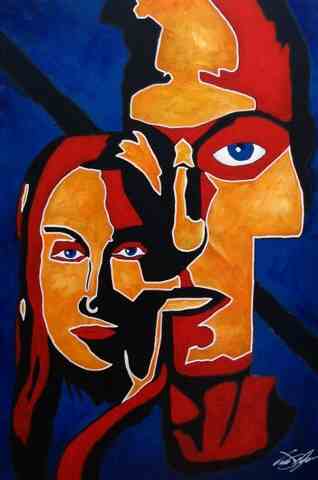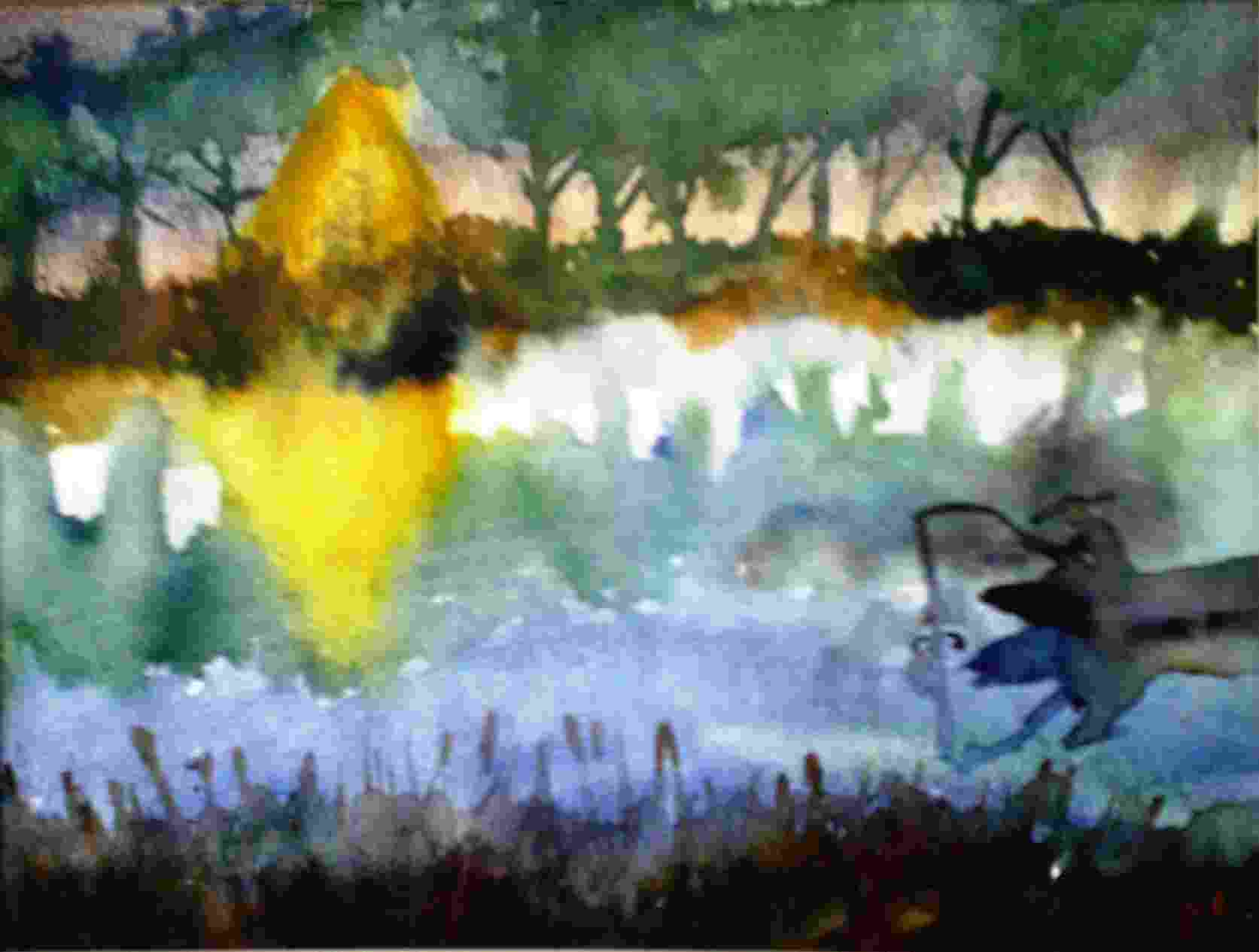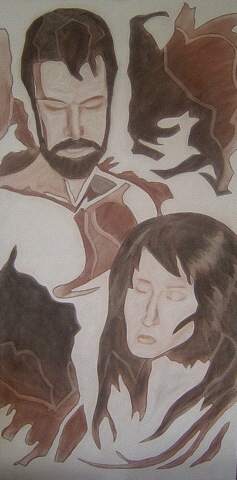Editor's
Intro
You’re clutching your hard earned BFA or MFA, you’re
gifted, everyone agrees you’re motivated, dedicated and
hard working. You’ve developed a strong portfolio and
you’ve been told that you have what it takes to make a
big splash in the art world. Congratulations! The problem is
that you don’t quite know how to go about letting the
who’s who of the art world know about your aspirations.
Your problem is typical of most art students. “I had no
sense of what graduate school would offer me, and was fumbling
around trying to understand what an artist’s career path
might be,” says Beverly Naidus in her book Arts
for Change:Teaching Outside the Frame. But there
are resources a novice artist can use to demystify the process.
Another resource,
which should be required reading in art schools, is ART/WORK:
Everything You Need to Know (and Do) As You Pursue Your Art
Career by Heather Darcy Bhandari and Jonathan
Melber. The book is a new publication( March 2009) and is jam
packed with valid, useful information about everything from
how to approach galleries to how to apply for grants. The writing
is concise, easily accessible and comprehensive. The authors
are not academics but rather people who are working in the art
world with and for artists. The book covers a wide range of
questions from gallery representation to legal agreements.
Prior to graduating
in Fine Arts, I wish I had had consulted a book like ART/WORK
because I could have avoided some major embarrassments and time
consuming errors in judgment. As visual arts editor for Arts
& Opinion, I don’t, as a rule, review books but
I was so impressed by the quality of information and presentation
of the two books mentioned above I felt it would be remiss if
I didn’t bring these gems to the attention of my readers.
Lydia Schrufer
- Arts Editor
____________________
RECAPTURING THE SPARK
by
WENDY BECCACCINI
 The
Church of Scientology YouTube Channel’s new “Meet
a Scientologist” videos attracted nearly 13,000 views
in less than a week. One features an
artist who tells how Scientology rekindled his
creative spark.
The
Church of Scientology YouTube Channel’s new “Meet
a Scientologist” videos attracted nearly 13,000 views
in less than a week. One features an
artist who tells how Scientology rekindled his
creative spark.
When Scientologist
Owen York, 31, says with a smile that he has been painting since
he was born, he’s not joking. He says he actually can’t
remember a time when he wasn’t painting.
Raised in Chicago
by parents who supported every childhood artistic whim of Owen
and his twin brother Dan, he grew up painting, drawing, writing
and playing piano and saxophone. By his high school years, he
was focused on painting. Today he creates colourful abstracts
of people and objects. He says he prefers acrylics because they
dry fast and he likes to work fast.
 As
he puts it, “turning blobs of color and flat surfaces
into things that people respond to” is a particular delight.
“When people look at my painting and go ‘Wow!’
or ‘How much does that cost?’ or ‘Can you
make me a poster of that?’ it’s really great. It’s
totally fun for me to be able to do that.”
As
he puts it, “turning blobs of color and flat surfaces
into things that people respond to” is a particular delight.
“When people look at my painting and go ‘Wow!’
or ‘How much does that cost?’ or ‘Can you
make me a poster of that?’ it’s really great. It’s
totally fun for me to be able to do that.”
York is also quick
to point out that if he hadn’t become a Scientologist
he probably wouldn’t be painting at all. At the age of
eight, he began having nightmares about death which, by his
mid-teens, lead him to look for answers about himself and life.
He says he knew there had to be more to life and that “somebody
had to have figured out something.” He started studying
“everything spiritual and metaphysical” that he
could get his hands on. “I figured I would know it when
I found it,” says Owen. 
In 1996 he enrolled
in Chicago’s American Academy of Art where he rigorously
studied the details of art media, methods and styles and at
the same time learned about restrictions.
He came to value
technical disciplines but notes that they can also become ‘limiters.’
“I became so indoctrinated into the ‘this is how
it’s done’ requirements, that artistically I began
to rely on those things rather than myself,” says York.
After graduating
in 1998 with a degree in Illustration, York freelanced for a
time but soon got to the point where he didn’t want to
do it anymore. “I could go through the motions and be
a very good rented pair of arms for an art director or somebody,
but that ability to create an original piece out of the blue
was gone. I’d lost my artistic spark.” York had
come to a point of being mad at life and “just annoyed
at everything,” he says. “I was actually confused
and frustrated as I didn’t know what the hell I was going
to do with my career or life.”
 That
all changed when he visited the Chicago Church of Scientology
with his brother. They took an introductory course and for York’s
many questions he found a lot of answers that made sense. One
of the most startling changes he experienced came while learning
the essentials of integrity. “Honesty is an important
part of integrity, but it’s even more fundamental than
that. It has to do with who you really are, and if you’re
not being that, what are you?” says York. “That
can just kill an artist.”
That
all changed when he visited the Chicago Church of Scientology
with his brother. They took an introductory course and for York’s
many questions he found a lot of answers that made sense. One
of the most startling changes he experienced came while learning
the essentials of integrity. “Honesty is an important
part of integrity, but it’s even more fundamental than
that. It has to do with who you really are, and if you’re
not being that, what are you?” says York. “That
can just kill an artist.”
“Scientology
is about the spiritual nature of man, and that includes artists,”
York laughs. “We sometimes get pushed around, pounded,
ignored, but if you understand what’s back of that and
are true to your own integrity, you can take the sting out of
it and life becomes a very beautiful thing.”
The Founder of
Scientology, L. Ron Hubbard, was an artist in many fields, including
writing, photography and cinematography, and wrote extensively
on the arts. In his 1973 essay “Art, More About”
he stated: “Works of art are viewed by people. They are
heard by people. They are felt by people. They are not just
the fodder of a close-knit group of initiates. They are the
soul food of all people.”

Art
works © Owen York